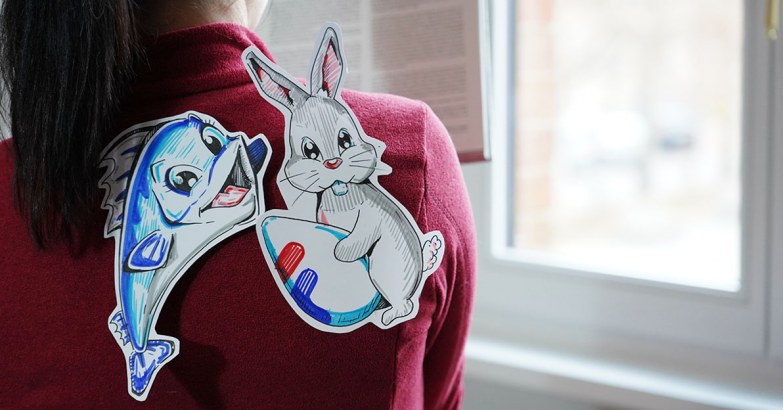FISHES AND RABBITS
Jean Pierre Jeunet’s The Fabulous Destiny of Amélie Poulain (Le Fabuleux Destin d’Amélie Poulain, 2001) begins introducing the childhood of the main character, Amélie Poulain (Audrey Tautou). We learn, among other things, that the girl has a pet fish, Blubber, who tries to leap out of his fish bowl every day with vigorous jumps. The Poulain family tries to manage his attempts to escape in different ways, but such routine compromises the mother’s psychologic balance, and they eventually decide to set him free in a river.
This moment looks comical, but only in a superficial way: the scientific community has discouraged the sale of spheric fish bowls for a long time, as their rounded shape confuses animals forced to spin round and round.
However, films and TV series are also able to show balanced, rational fishes. In Italy we know it very well thanks to TV show Boris (2007), a witty satire of cinema told through the perspective of a red fish in a bowl (named Boris, in fact), the confessor of director René Ferretti, interpreted by Francesco Pannofino.
From Boris’s Rome we move to Hollywood, the perfect place to introduce the second animal we speak of today, the rabbit. One of Hollywood’s best sagas of the past years is Matrix (1999 – 2021), directed by the Wachowski sisters: in one of the first movie’s most famous moments hacker Neo (Keanu Reeves), receives a very precise instruction by mysterious Morpheus (Laurence Fishburne). ‘Follow the white rabbit’ is the suggestion that guides the leading character towards an alternative dimension of the 23rd century, Matrix, in which machines have risen up and become rebellious against humans. However, it also reminds of Alice’s Adventures in Wonderland (1865), the fantastic novel by Lewis Carroll in which an English girl, Alice Liddell, travels in a parallel universe after meeting a white rabbit, continuously in a hurry. According to Carroll, the animal represents the passing of time, the anxiety of a young girl in managing the passage from childhood to teenage.
Rabbits symbolize change and rebirth in many cultures in the world, and for this reason it deals with the Christian Easter tradition. Each April 1st (April Fool’s Day), on the other hand, we usually play jokes and get pranked, and such jokes are commonly named fishes: there are still doubts about the origins of such event, but it seems it derives from the Western adoption of the Gregorian calendar by King Charles IX, the King of France, in 1564. Some celebrations of the vernal equinox, up to that moment done on March 25, had their peak on April 1. Some subjects – the so-called ‘April fools’ – continued celebrating on the old day, so the local community used to prank them by giving empty gift packages and inviting them to fake parties.
Next April 1st, Saturday, from 9am to 6pm, Fishes & Rabbits are going to meet on the occasion of the homonymous event organized by Fondazione FILA Museum and dedicated to kids. We’re going to imagine – with the help of crayons, marker pens and a lot of fantasy – a universe of fantastic creatures, made of details taken both from the mammalian and the water universes. It’s going to be about creativity, but also about reflections on how to coexist with animals surrounding us: reserve your slot here!


